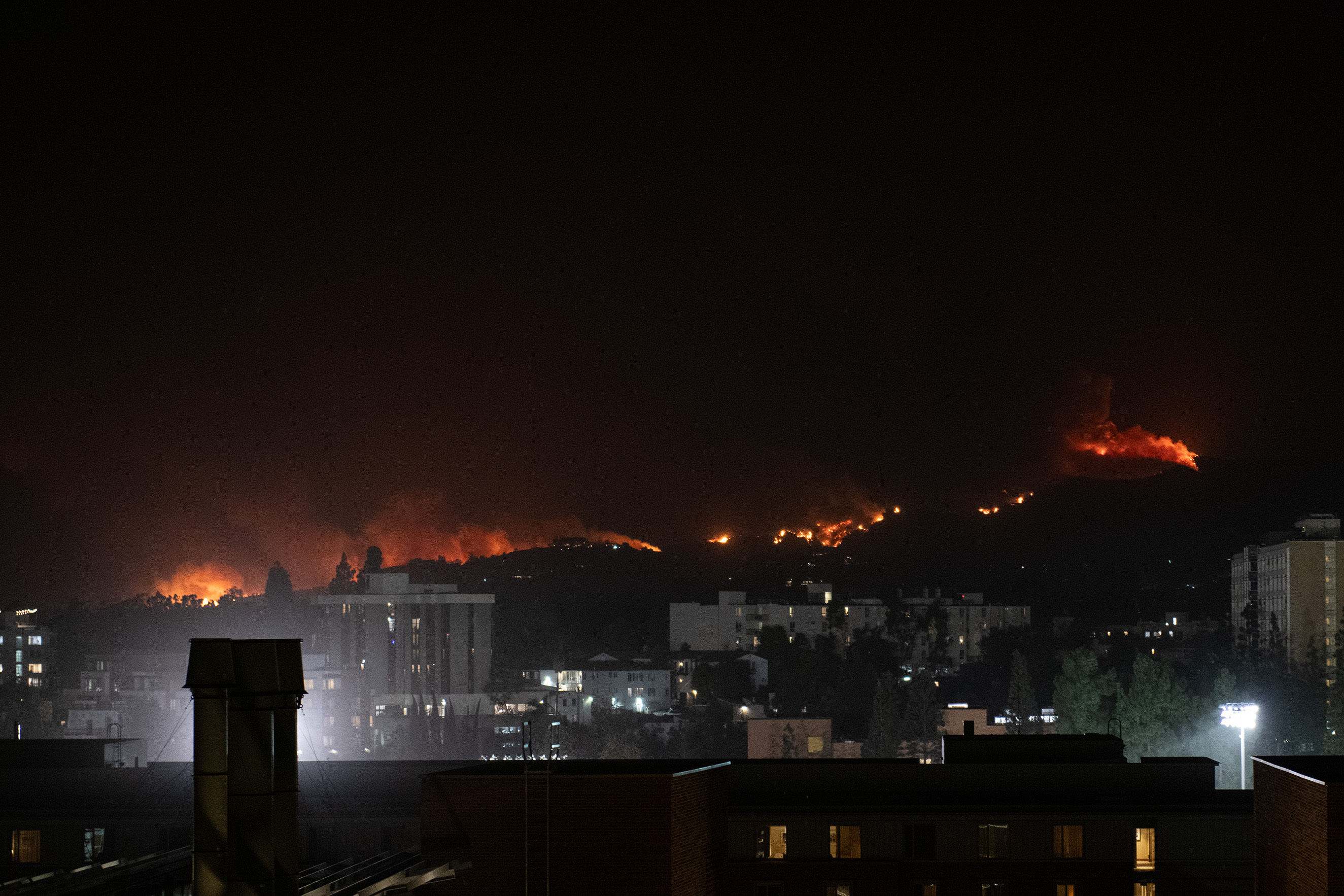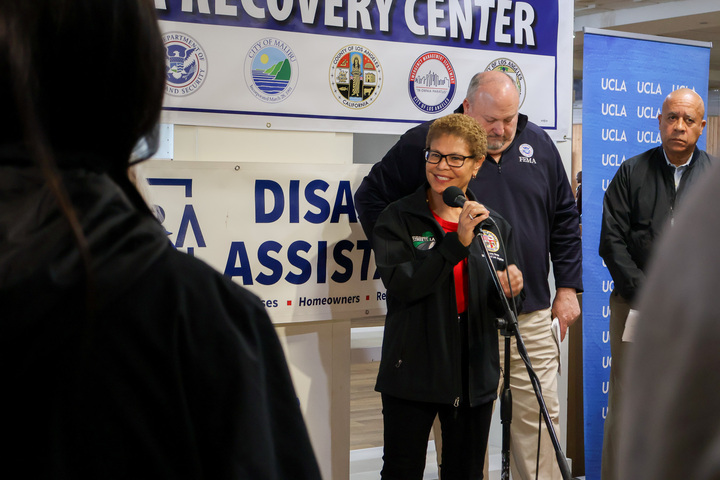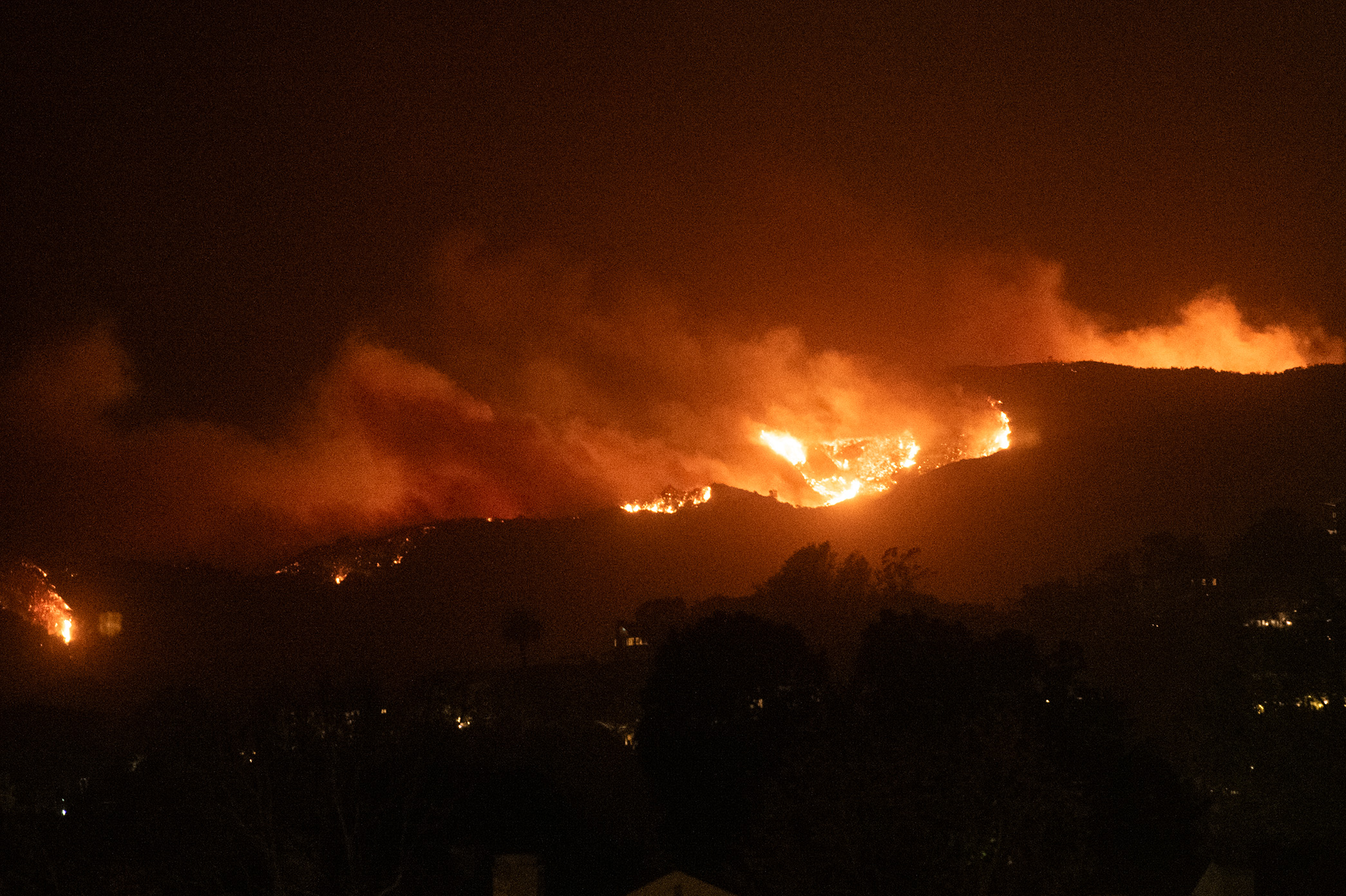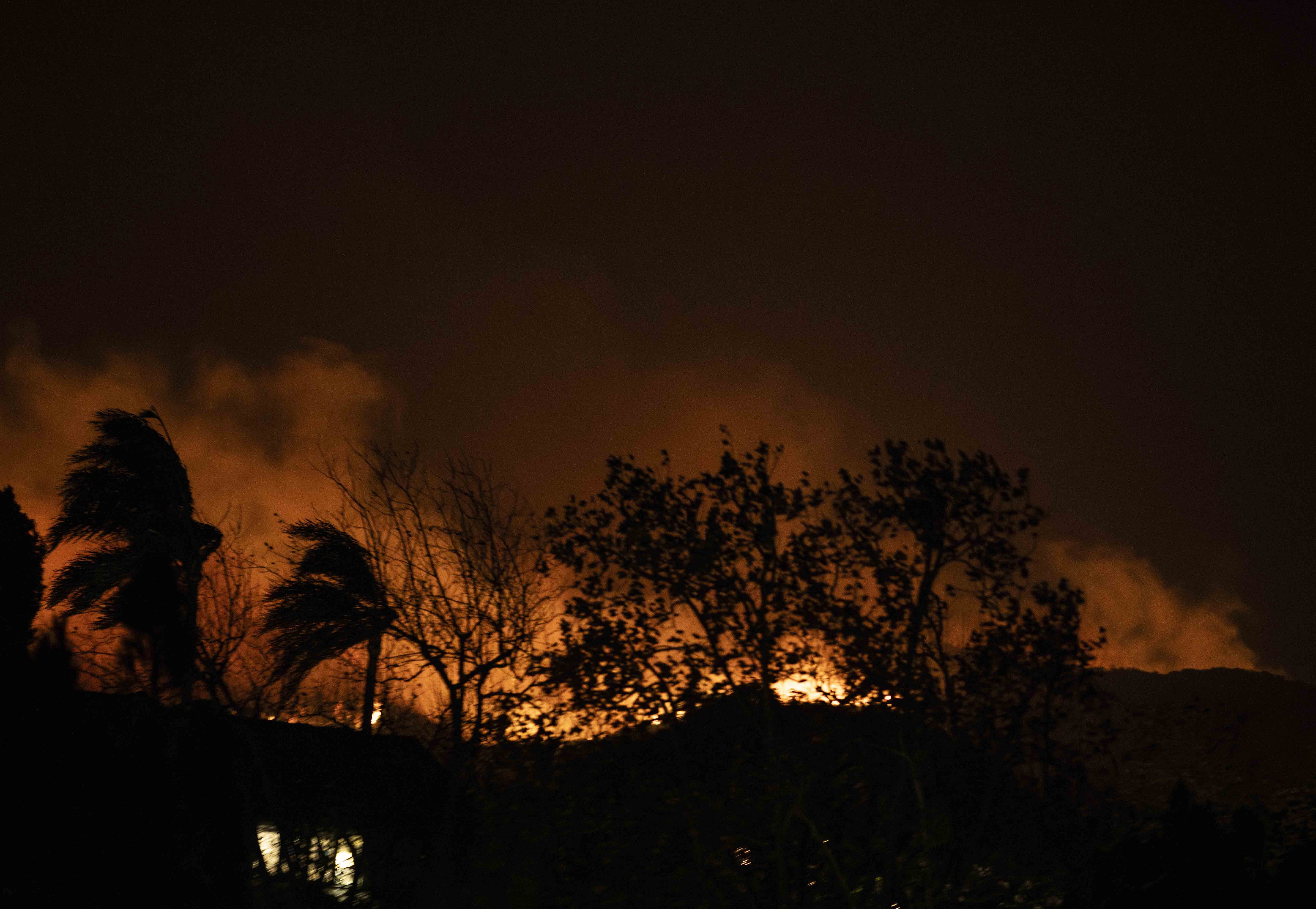LA County, city officials outline ongoing recovery efforts after the January fires

A fire is visible from Westwood. Since January, Los Angeles City and County officials have worked together to navigate the unique recovery efforts of the January 2025 fires. (Nicolas Greamo/Daily Bruin senior staff)
By Nury Salazar-Ibanez
April 13, 2025 3:53 p.m.
This post was updated April 13 at 11:28 p.m.
Fires burned across Los Angeles this January, prompting emergency responses from different levels of government across LA to support displaced Angelenos.
Fires in LA County began Jan. 7 and eventually burned about 40,000 acres across the greater LA area. Mayor Karen Bass said the United States Environmental Protection Agency began working with other federal entities in the aftermath of the fires on the first phase of the debris removal process.
Bass also met with LA business leaders in January to partner in the recovery and repair of the Pacific Palisades, where a fire burned 23,448 acres. LA City and County entities have worked alongside one another to handle damage control and regulations for rebuilding, according to Bass’ executive order.
Daniel Thompson, an assistant professor of political science, said managing disaster recovery involves coordinating between state entities like the California Department of Forestry and Fire Prevention and federal entities, since the recovery touches on every level of government.
“If one police department is too small or too weak to handle a major crisis, there are all of these partner organizations around that can help resolve it,” he said. “But it does also make it harder to figure out who’s responsible and how to hold them accountable.”
LA County comprises 38 governing departments and more than 500 political districts with different responsibilities such as education and sanitation. Meanwhile, the city of LA has 13 major governing departments.
Helen Chavez Garcia, a spokesperson for Kathryn Barger, LA County 5th District supervisor, said there was a difference in recovery efforts between places affected by the Palisades fire and the Eaton fire because the Palisades fire took place within LA city limits, whereas the Eaton fire took place in an unincorporated community in LA County.
Altadena is one of around 125 unincorporated communities in LA County, Garcia said. Depending on which district the community is in, that supervisor generally becomes the “de facto mayor,” Garcia said, adding that Barger is the supervisor who represents Altadena, where the Eaton fire started.
Garcia also said the LA County Fire Department, the LA County Sheriff’s Department, the LA County’s Office of Emergency Management and the LA County Public Works Department will provide direct first responder support for those who went to the fires or aid for recovery.
“I would characterize the overall approach as being very coordinated, not a competition for resources, but … making sure that needs are met, and that there’s an equitable approach to drawing down resources for recovery,” Garcia said.
LA County offers a government-run debris removal program residents can opt in to while also providing the option for affected residents to opt out and manage cleanup independently. Residents must opt in or out of the program by April 15.
Residents opting out are required to apply for a fire debris removal application with certification from the Environmental Protection Agency. People affected can also apply for wildfire disaster assistance through the Federal Emergency Management Agency, according to the LA County Recovers website.
The U.S. Army Corps of Engineers is coordinating phase two of the debris removal process, according to the LA County Recovers site. According to the LA City Emergency Management Department site, LA City and County have also worked in collaboration with the state, as well as with the Federal Emergency Management Agency, to open recovery centers across LA.
[Related: Disaster Recovery Center opens at UCLA Research Park to aid LA County fire victims]
Adrin Nazarian, LA City 2nd District councilmember, said the city and county support each other’s efforts because neither wanted the situation to worsen, especially in their specific jurisdiction. He added that Bass’ efforts in helping residents affected by the fires have significantly impacted the recovery process.
“She went far and wide to make sure that we are getting all the resources needed in order to be able to address the issue,” he said.
Garcia said Barger’s constituents did not receive timely notifications on the Eaton fire regarding fire operations and evacuation orders from the LA County emergency management officials, resulting in confusion. An LA Times investigation found that those east of Lake Avenue received their first evacuation alert Jan. 7 around 6:40 p.m., while those in the west of Lake did not receive an evacuation order until Jan. 8 around 3:30 a.m. Seventeen of the 18 deaths from the Eaton fire also occurred west of Lake Avenue, according to the LA Times.
In response, Barger introduced a motion investigating the emergency notifications. The motion was approved Jan. 28 and a third-party progress report is said to be received by the Board within 90 days.
Barger believes in the need for transparency and accountability regarding the fire responses, Garcia said. The supervisor has called on building professionals to aid in accelerating the rebuilding process and encouraged fire survivors targeted by tow companies during the time of emergency to speak out, according to The Guardian.
Garcia said it can be difficult to handle emergencies where different entities have different authority.
“Utilities are all a private sector. They’re private entities,” she said. “The government is not involved at all. They don’t have jurisdiction, so the county doesn’t have any power authority over those private industries.”
Nazarian added that the set up of LA City and County is highly dense and therefore faces unique issues. Nonetheless, due to the closeness with other cities such as Burbank and Pasadena, there is an integrated emergency system for all regions to be an aid to one another.
Bass said in an emailed statement that all powers in charge were working as fast as possible in fire recovery.
“This accelerated timeline emphasizes the power of local, state and federal coordination and leadership, and we will continue cutting through bureaucracy and working together on behalf of the people of the Palisades,” Bass said in the statement.
Additionally, Garcia added that Supervisor Barger is committed to implementing equitable recovery by providing information in English and Spanish, as well as by having American Sign Language interpreters.
“We want to make sure that the information is accessible equitably,” she said.





